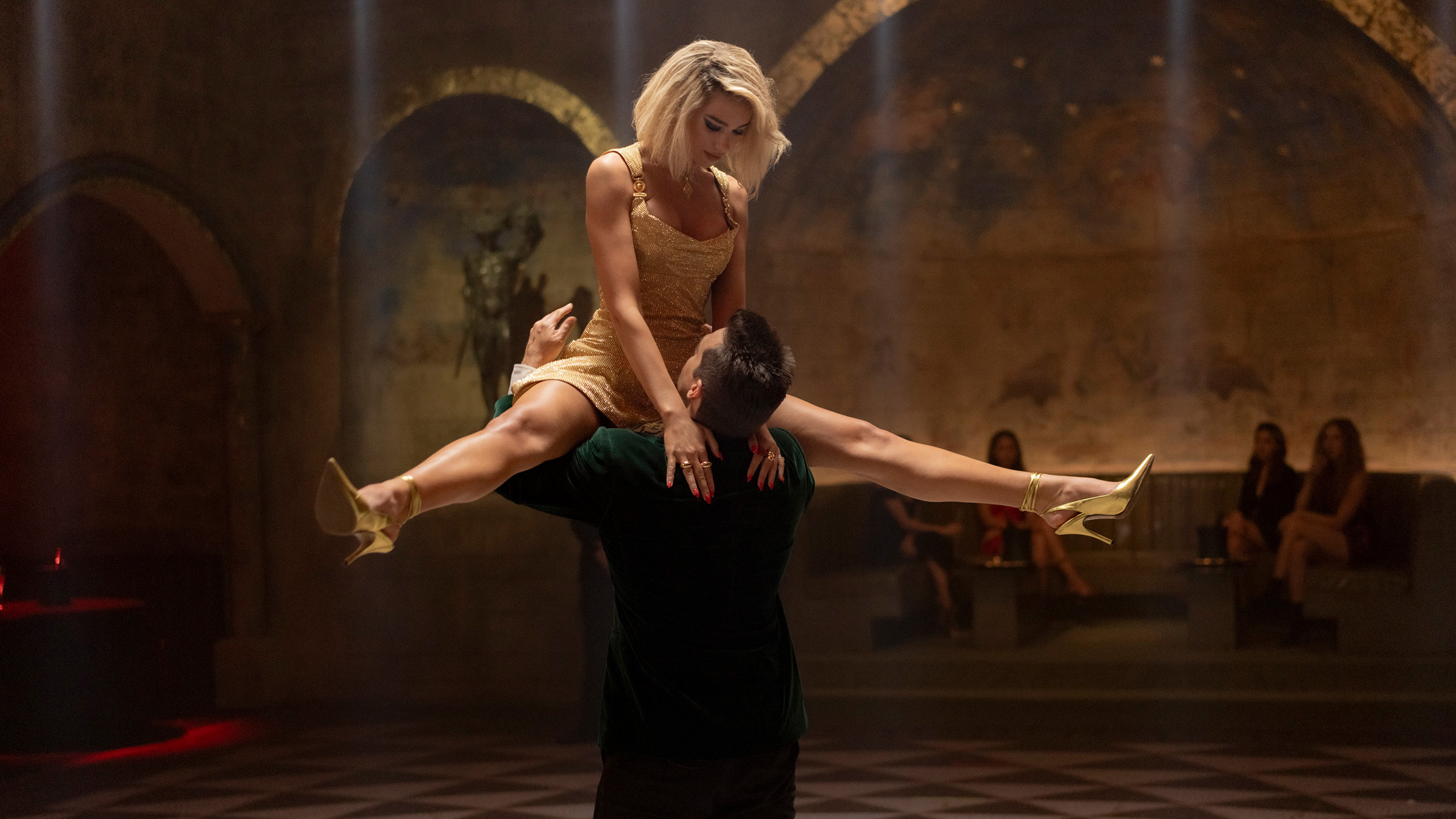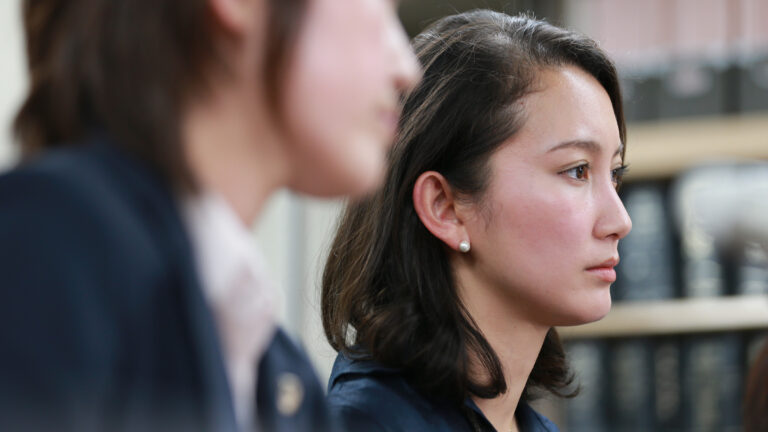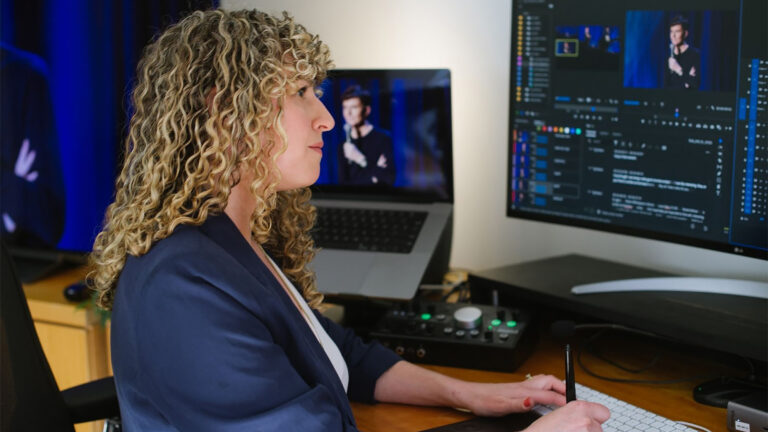Although Argylle editors Lee Smith, ACE and Tom Harrison-Read have never worked together before, they do have a mutual connection in the Matthew Vaughn universe. It was Eddie Hamilton, ACE, Smith’s co-editor on Vaughn’s X-Men: First Class (2011) who recommended that Tom, his former assistant on Mission: Impossible – Rogue Nation (2015), join the cutting crew for Argylle. Alongside editor Col Goudie, Smith and Harrison-Read collaborated to realize Vaughn’s vision for an action-comedy where the quips come as fast as the cuts.
Argylle Plot Summary
A secluded writer named Elly Conway writes best-selling espionage novels about a secret agent named Argylle, a spy determined to expose a worldwide syndicate. But the line between fiction and reality begins to blur when her books start to mirror the covert actions of a real-life organization.
In our discussion with Argylle editors Lee Smith, ACE and Tom Harrison-Read, we talk about:
- Revisiting Chaos
- Cary Grant…action hero?
- How fun wins every time
- A tentative approach to head stomping
- Putting your wrong foot forward
Listen while you read…
Editing Argylle
MF: I figured we should start off talking about Argylle by talking about another movie, and that’s X-Men: First Class. That was the last film you cut for Matthew Vaughn alongside editor Eddie Hamilton, ACE. Tell me about meeting Matthew Vaughn back then and how that might have led to you cutting Argylle.
Lee Smith, ACE: We had a very good experience on X-Men: First Class, and that was indeed my first outing with Matthew. It was a lot of fun. It was an enjoyable film, kind of frantic and chaotic in every possible sense. When he rang again, I thought, “Chaos, why not? Let’s do that again. Let’s revisit the chaos.”
MF: Tom, even though I don’t think you have cut for Matthew Vaughn before, you have an indirect connection to X-Men: First Class as well. You assisted Eddie Hamilton on Mission: Impossible – Rogue Nation. That could be one answer for how you got connected to Argylle. Or it could be another rogue film you assisted on, Rogue One: A Star Wars Story? So was it option one, option two, both, or neither?
Tom Harrison-Read: You should be a detective. It was Exhibit A, your honor. I got on Argylle through Eddie Hamilton. Eddie and I have been friends for a long time. He’s a mentor of mine, so he called me up and told me about Argylle and the opportunity to work with Lee. I grabbed that with both hands. I was very happy to talk to Lee and find out that he was an absolute gent. Lee is a fun person to talk to and get on with. So, we went from there.
MF: Matthew Vaughn calls Argylle an ode to 1980s action thrillers like Die Hard and Lethal Weapon. When you met with Matthew and talked about this film, did he give you any reference films for developing the style and the sensibilities of Argylle?

Tom Harrison-Read: Well, funnily enough, it wasn’t the eighties action movies at all. The touchstone that Matthew discussed was Charade. We talked about that movie’s light touch and the twists and turns in its narrative. The whole movie slightly raises its eyebrow and winks at the audience. It’s a romp rather than anything too serious or muscular. It’s less of an action movie, more like a romantic comedy.
Lee Smith, ACE: Matthew talked to me about Romancing the Stone . He wanted a film that his kids could watch. Argylle shows off warmth and energy. It’s the romantic sort of side of being a spy, but it still takes you on a rip-roaring adventure.
Like Tom was saying, Charade was a touch point. I think Matthew was going for an old school style of filmmaking. The end result is that there’s a lot of unique action embedded in these crazy plot twists. But I think the heart of the film is the warmth between those central characters.

MF: Lee, I’m sure that many scripts have passed before your eyes. Was there anything about it that stood out about the script for Argylle?
Lee Smith, ACE: I think the most challenging thing was its complexity. The script had a lot of dialog and exposition. But I enjoyed reading it in the framework of what Matthew was describing. But the chemistry between the actors is what determines if you can pull that off. I think Sam Rockwell and Bryce Dallas Howard met that criteria.
Tom Harrison-Read: Matthew always said the script originally played a lot straighter than it is in the final movie. I think the original idea was to cast a square-jawed leading man and a more traditionally glamorous leading lady. Matthew switched that around. He added lots of other elements to it, introduced the cat, and put in little character beats. Those are the things that make the movie interesting and unique.
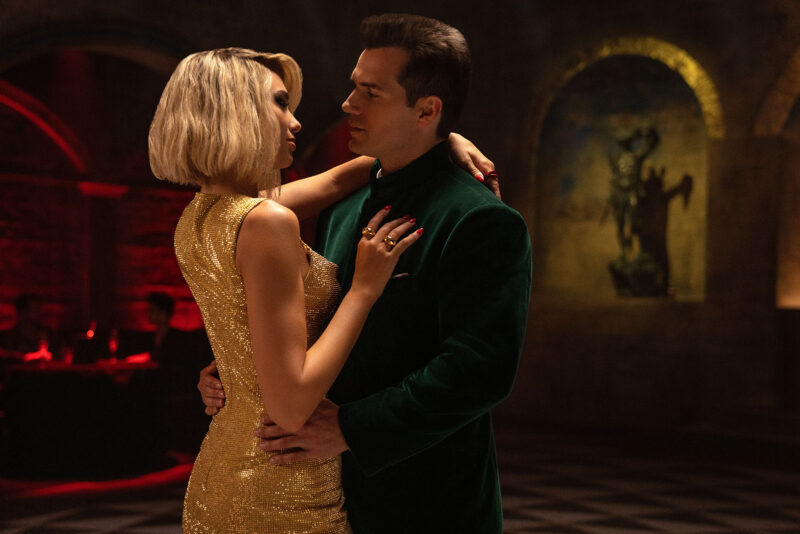
I think Romancing the Stone is mentioned as a starting point. When the movie begins, you think you’re watching Romancing the Stone. Then Matthew throws all of these other special sauces on top of it. So, you start off thinking it’s one thing, and then it becomes another thing. You could sell the movie by saying it’s a spy version of Romancing the Stone without ruining any plot twists or where the story goes.
When Matthew says Romancing the Stone, I think that’s just what he wants you to think about going into the movie, and then he’ll take you off to other exciting places.
MF: People are trying to guess who wrote the Argylle book. There were rumors about Taylor Swift being the writer. Then, it turned out Matthew Vaughn enlisted the help of an author to create the Argylle book so that he could pretend to have a movie based on a book. At least I think I have that right. The whole thing gives me a brain freeze.
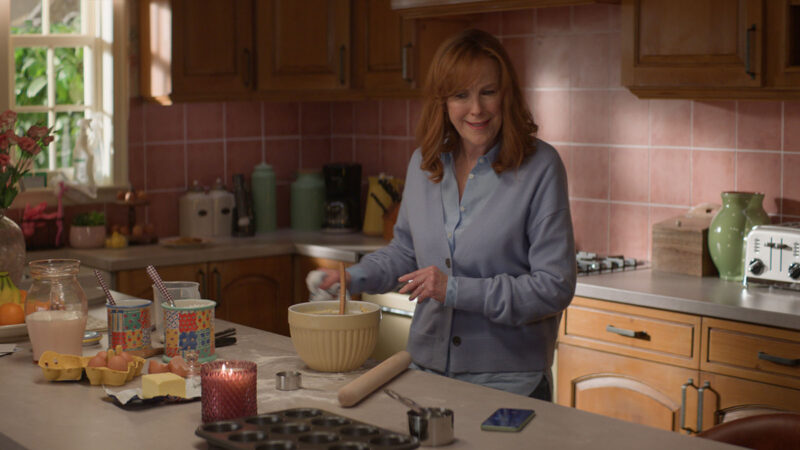
On top of that, Argylle seems to be the start of a franchise, if not a tie into Vaughn’s Kingsman series. I say all that first to give credit to Matthew Vaughn for actually coming up with some new IP in a world where all we seem to be doing is rebooting other things. But for you guys, to be the best editor you can be on a film, do you need to know about that world beyond the script? Do you need to know if this film fits into a bigger picture?
Lee Smith, ACE: From my point of view, no. I’d rather not know. I’ve got caught up in world building on other studio films, and I find it frustrating. You can’t start making changes because of a film that hasn’t been made yet. You should do the best you can with the materials that you have rather than cunningly try to craft it for the theoretical next film. There will never be a next film unless you make a good first film. That’s what I focus on.
Tom Harrison-Read: We weren’t aware that there was going to be a sequel or a prequel until quite far into the process, definitely after we’d done the first assembly. So, this film stands alone. I think Matthew just likes to tease where the other things can go.

There’s only one thing in the whole film that got changed about one of the potential spin-offs, which was just a 180-degree eyeline. Otherwise, Argylle is self-contained. It doesn’t worry about all the other stuff.
Lee Smith, ACE: I took this film through to the first cut and then handed it off to Tom because I was already booked on another film. Eventually, Tom had to come and go as the protracted post period rolled on. I haven’t been involved in anything like that before. It was kind of unusual. When I left the film, it was a standalone film. I wouldn’t be surprised to hear that Matthew was angling to make a series out of it. I’m pretty sure he mentioned the idea that it could go on into another world later, which would be something he’d be interested in. But from my time on the film, it wasn’t a pressing point.
MF: I’ve heard that editors working for Matthew Vaughn get to cut at his house and his lovely wife, Claudia Schiffer, makes them lunch. That sounds like a pretty good day at the office. Where did you each edit when you were doing your work?
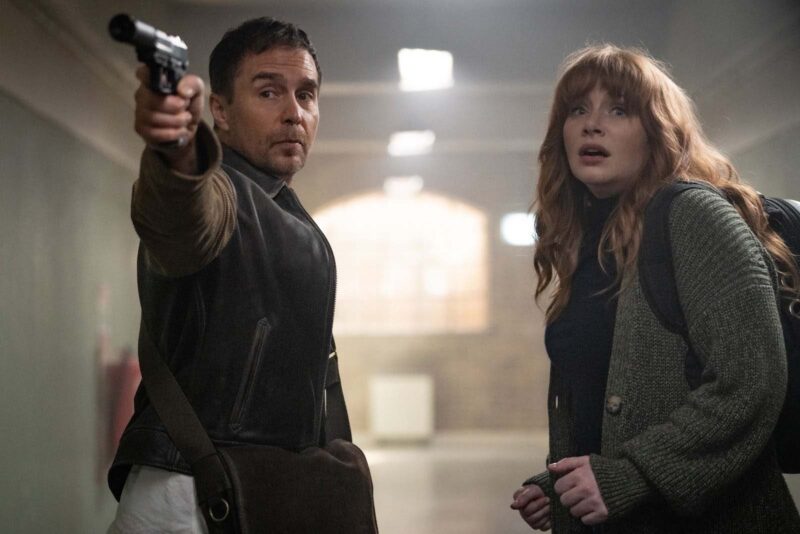
Lee Smith, ACE: Argylle was shot during COVID, so I was editing from Santa Barbara. Tom was working in London with the crew and my long-term assistant, Pearce Roemer was in Montana. The rest of the editorial crew was based in London. Tom was based in London, but he spent time going back and forth to the set. We were a worldwide crew.
Tom Harrison-Read: I spent every day in a trailer at the unit base, wherever the unit was. My assistants were all in an office building. It wasn’t at the studio, just in a production office building. Lee was in L.A. and Pearce was in Montana, so we literally couldn’t have been more spread out. We made good use of file sharing technology, which kept us all kind of able to work together. But I wasn’t online in my trailer most of the time because I was on a unit base. I had to get the dailies downloaded, scramble to set, and then get drives sent to me when the guys had finished syncing things up. It was quite chaotic.
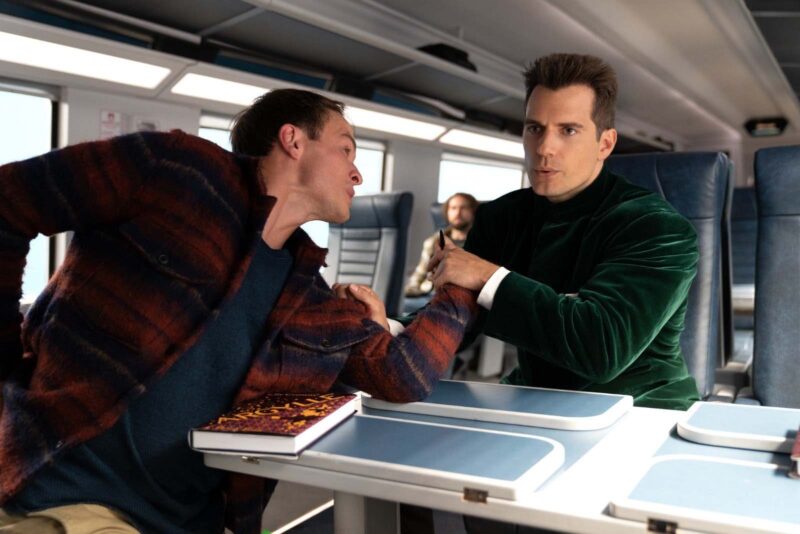
I was on call when Matthew needed to reference or talk about something, trying to assemble what was shot the day before. At the end of my day, I would hand over everything to Lee and tell him everything that happened on set that day. Then he would do his cut independently of mine. So, I was firefighting a lot during the shoot, which hopefully gave Lee a bit of room to get on with his assembly. We ended up with two assemblies. Each scene was cut by both of us. It was quite an interesting dynamic to have in a movie like this. Luckily, it was harmonious and we helped each other out.
MF: Did Claudia at least bring you a sandwich?
Tom Harrison-Read: I have been to Matthew’s house several times. I even had to go to Greece when his family were on holiday and carry on editing there. Matthew has AVIDs everywhere he goes so he can keep working. He’s a bit of a workaholic.

MF: God love him. Do you both have a preference? Is it better to be closer to production and have that immediacy with the director, or do you like to be removed from the set?
Lee Smith, ACE: Having Tom on the set was essential. That’s the only way it could have worked, because it freed me up to concentrate on the footage. With Matthew, you need that. Eddie fulfilled that task on X-Men: First Class. He was available to whizz around and deal with whatever the fire was that day. I had the luxury of being ensconced in L.A., concentrating on what I was doing.
Matthew and I would talk on the phone every other day, and Tom would be updated. I don’t want to keep using the word chaos, but it was a let’s call it an active shoot. It couldn’t have gone smoother editorially with that combination of people. I don’t think it would have worked out very well if Matthew had no one on the ground with him. I have done it with other directors, but in that scenario, I think he needed to have someone there.
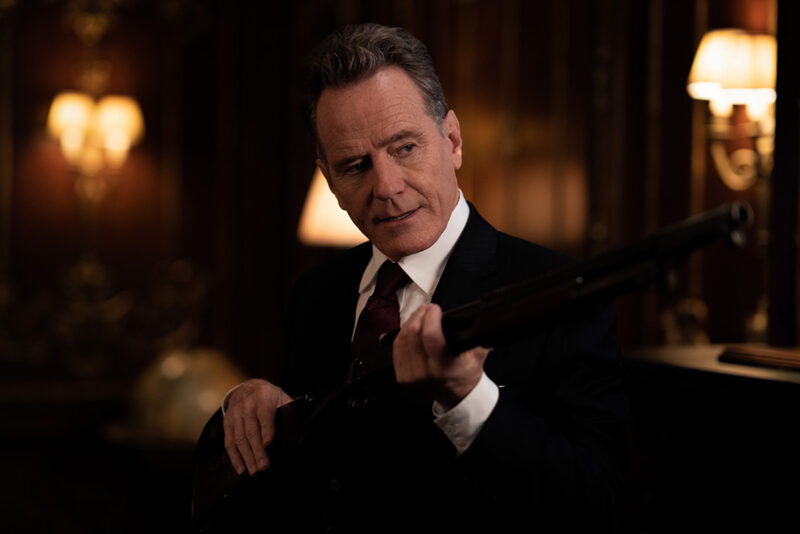
Tom Harrison-Read: There were also the producers, the second unit director, and all the other people always hovering around needing information. They needed to reference stuff, to play with footage, and to work things out on the day. There were a lot of people disturbing me in my trailer all day long. Lee was super helpful because he always woke up early. We would talk about things, I’d tell him what was going on that day, and I think we kept everybody happy all the way through.
In the end, Matthew said he didn’t even have any notes on the first cut that he watched. He was kind of gobsmacked. He said, “I’m so happy. I don’t have any notes. I have to go away and think about it,” which was unprecedented at the time.
MF: Every review should go like that. Let’s compare the editorial setup that you each had. Tom, you’re jammed into a trailer on location. What do you have to have there in the room with you and how do you like to have it set up?
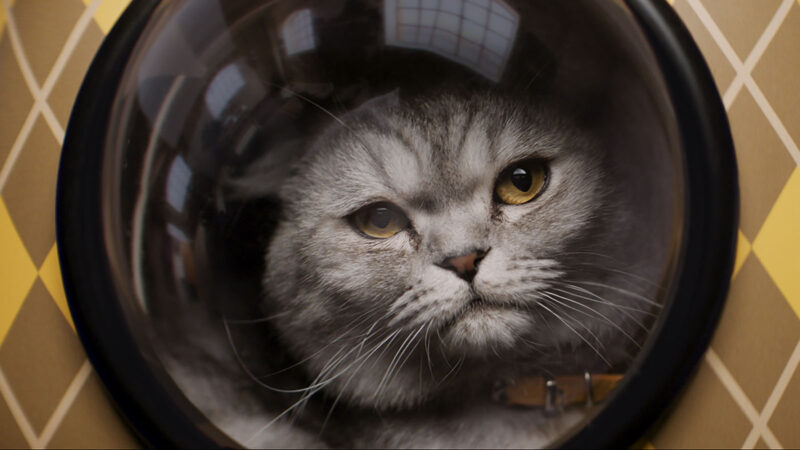
Tom Harrison-Read: We had a full system in the trailer. We were running on 2018 AVID Media Composer. I had my two computer screens, my client monitor, and a big OLED. Lee and I both prefer to work in stereo, particularly because I had to pack down and rebuild my AVID every two days or so. Every time the production unit moved, my trailer had to be moved.
It was a simple, straightforward AVID setup, but it was full AVID. I also had to set an AVID up at home. At the end of the shoot day, Matthew would often have ideas and start talking to Lee, so I would come back, move my sync box over, and plug it into my home AVID. I still have my equipment, but I had to buy a new I/O box to make it work properly. We didn’t have a particularly flush setup, but it was a full AVID system in a trailer, in a bedroom and wherever else we were.
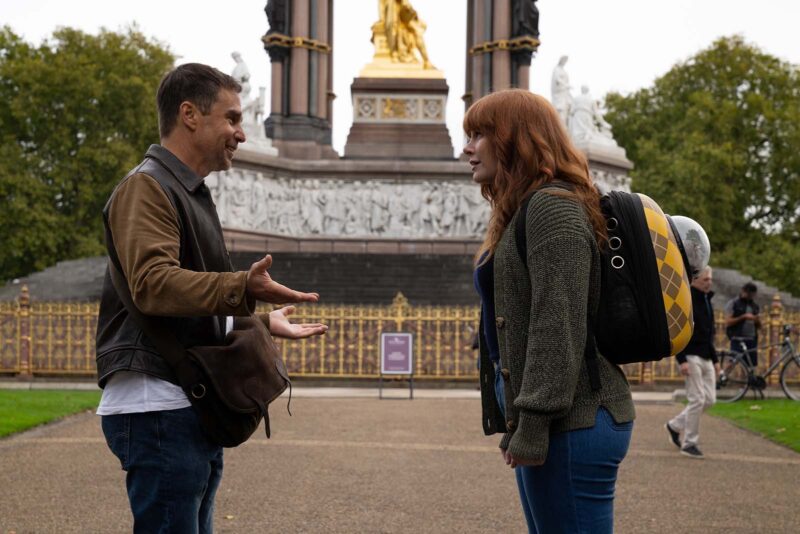
MF: How about you, Lee?
Lee Smith, ACE: Pearce organized the whole AVID setup, which I guess was just mirroring Tom’s. We had a SalonSync box, which has proved to be invaluable. I have a couple of big monitors and a long HDMI cable that I run to a sixty-five-inch monitor in another room. Occasionally, I wander off there so I can get away from my desk. I always find that handy because, if I’m sitting in front of the AVID, my fingers always hit the spacebar. I’m always going, “I could do this, I could do that.” But when you’re in another room with no control, you watch the scenes play as an audience. That was kind of fun.
Pearce was doing a lot of sound work and tidying up. We were putting in a lot of music. Matthew likes to see us complete a version of each scene. I’m used to working that way as well, not with every director, but I’m happy to do it. Matthew was generally always thrilled because the shoot was very difficult. He rang me a couple of times and said, “I can’t believe that scene works!” I would go, “High praise, Obi-Wan.”
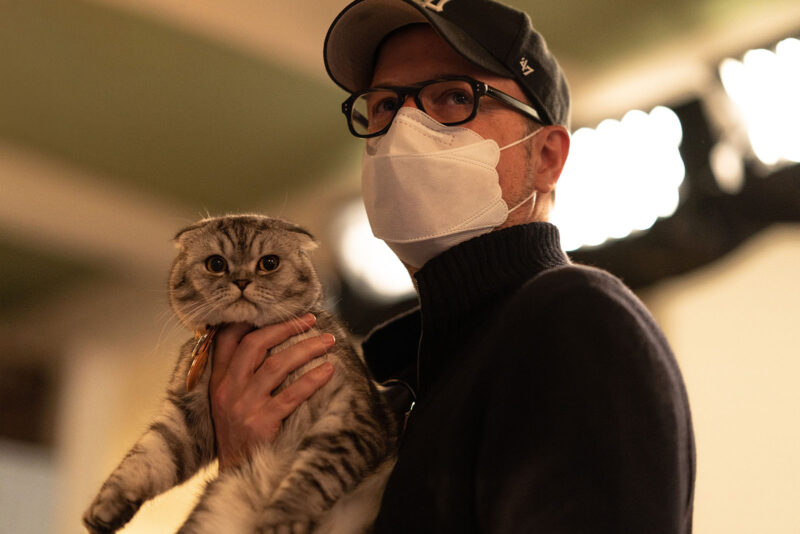
I think sometimes people get lost in the coverage. Argylle had a lot of VFX-heavy sequences, but we were able to make a lot of the film look good. Tom did a lot of work on the oil skating sequence. That took a long time to shape, mainly because it was such a heavy VFX-intensive scene.
There was just a lot of waiting around. I was off the film before anyone saw how that scene looked. I got a glimpse of it in maybe one shot, which looked promising. It was the same with the smoke fight. We were cutting a smoke fight with no smoke. That was very difficult. But it was fascinating. I went off and did Empire of Light in England and came back to see Tom for about ten days. That was when I saw part of the smoke fight and thought, “Wow, that looks cool. I think that’s going to work.” But all of the visual effects on this film took forever, as Tom will attest. I think he went off and did something else for quite some time.

Tom Harrison-Read: I finished back in May 2023. We were at the end of our final mix, but one of the vendors hadn’t delivered the effects yet. It was supposed to be for five more weeks, but that carried on for five more months. We just had a bit of trouble with a particular vendor.
The way that Matthew works is that once we got the cut of all of these VFX-heavy sequences down, he said, “I want to see this whole sequence looking like something before I go in and start cutting it down.” He was fully aware that is not the most economical way of doing things, but he said, “This is what I would want it to be. This is probably the longest version of it, but I won’t be able to tell if it’s too much until I’ve seen something visually finished.” Unfortunately, it took a long time to get to that point.
MF: You mentioned that you had two assemblies and there is a lot of intercutting going on in the movie. It goes back and forth between the character of Aidan, played by Sam Rockwell, who is with Bryce Dallas Howard’s character Elly. As she watches Aidan do these stunts, she’s constantly substituting them with the two characters that are in her mind, and it goes back and forth. You have these two scenes playing out where you’re cutting between two different characters. I would just like to know how you organized and approached that kind of edit.
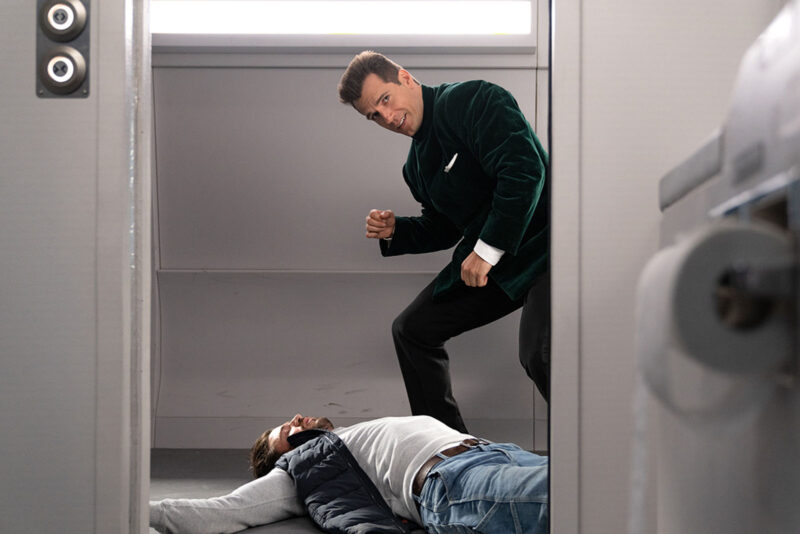
Lee Smith, ACE: The good thing with those particular scenes was they were infinitely cuttable. There was some second unit footage that was shot later, but the majority of it was in-camera. There was a lot of material that could be cut. We just had to figure out which character we wanted to be with in each particular moment.
Some of it is very specific, but some of it could have gone either way. Those were the most fun to cut because, from a visual standpoint, it worked, and that was a great boon. For example, the Mini Moke scene at the beginning had very little in the way of visual reference to get an understanding of what was happening. There was some second unit in-camera stuff, but a lot of it was based on a CGI-generated previs that went through a lot of manipulation to arrive at the final product.
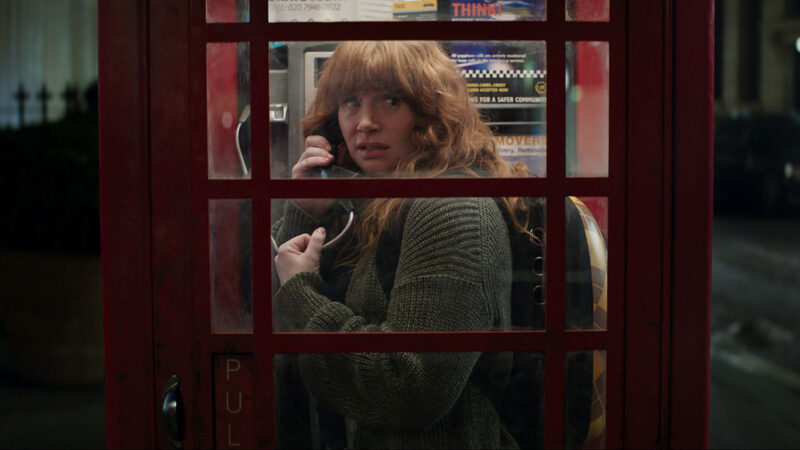
The first time I ever saw that scene was a few nights ago when I watched the film. I can understand what Matthew is talking about. It’s difficult to work on these complex sequences when so much has to be done to them before you can understand what’s going on. Visually, it’s very difficult. This is probably the most difficult film I’ve ever seen as far as understanding what’s going on.
Tom Harrison-Read: The train sequence is part of the film that barely changed from Lee’s first cut. It’s pretty much the same as it was without the VFX. The cut didn’t change much, just the bookends of it and a few bits here and there. The music and everything stuck all the way through. That was the touchstone. It was the tone we wanted for the movie. We wanted that amount of comedy in the action, the visual inventiveness, and it had the heartbeat of what we wanted the rest of the movie to be like. Matthew said, “I’m not touching a frame of that sequence.” And he never went back and asked us to change it.

Whenever he wanted someone to see something from the movie, he would come to my trailer and say, “Play the train sequence” and we’d play it for whoever was with him. It was usually other actors or people who were visiting the set. He was very pleased with it.
Lee Smith, ACE: I think, tonally, Tom’s right. That was the scene with the temp music that ended up being used. The whole vibe of that train scene was what the film was trying to get to. It was very exciting to see. I wouldn’t say it wasn’t a complicated scene to cut, but I just love it when I have all the material in front of me. It’s just gratifying.
I’ve done work on other films that had CG characters in them, and I find it debilitating. You’re just cutting guys in green suits, or they’re not there or whatever. I don’t know. I’m just not a patient person. I’m sure Tom’s more patient than I am. I want everything to look right from the start. I guess that comes from a career that was pre-visual effects where everything just had to look good from the beginning. There was no going back and tarting things up. You just had your movie as you were working.
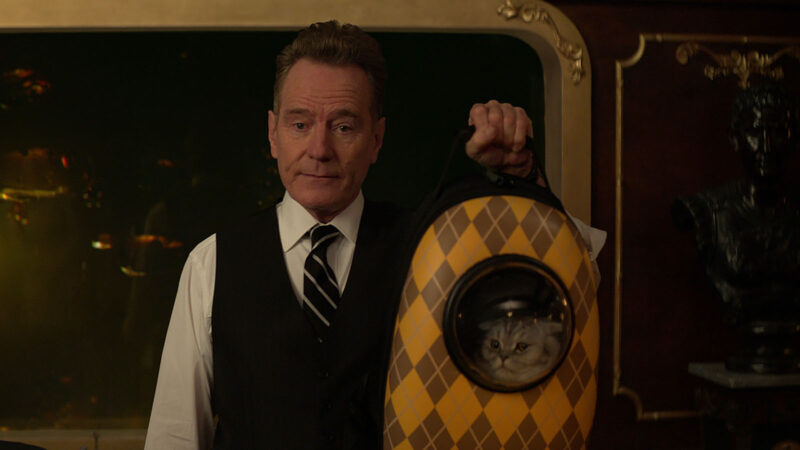
Tom Harrison-Read: The train scene was great because we had Henry Cavill and Sam Rockwell each doing a setup. They both did the fight choreography. Sam would do it, and then Henry would step in and do the same thing. So, when you were watching dailies, you’re going, “Henry did that brilliantly. I want to use him for that part. Oh, Sam did something funny there.” In a way, the dailies would kind of organically tell us how to put it together. You didn’t even have to wait till the next day or anything like that.
MF: When you built those scenes, did you start with something specific? Did you choose a match point and then build out around it? Or was it truly linear and you built it like you would build it like a narrative-driven sequence?
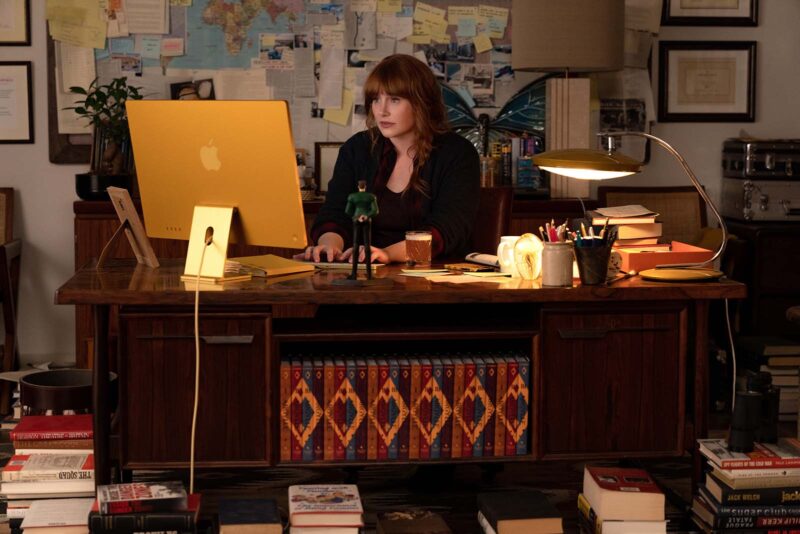
Lee Smith, ACE: Well, in the train sequence Henry and Sam both stepped in and covered the same action. So, all our reverses were shot with the correct actors. We also had a complete pass with the stunt guys. The stunt guys were so good in that sequence. I don’t know whether there was any CG rectification. I don’t think I’ve ever used stunt guys that much in a scene. Usually you get hamstrung by something and you’re forced to cut incorrectly because the stunts fall apart.
Also, there were some organic moments where Henry did things that weren’t exactly scheduled. The stunt guy leaps out from one of the side chairs and sort of just hits him. He doesn’t budge and he throws him off, which wasn’t exactly what Sam Rockwell did. He just gets knocked over. If you rewatch the scene, that’s not how we were doing it. We were matching the whole way. Then all of a sudden we had two moments that didn’t match at all. But there was comedy in it. There was the humor of Henry Cavill’s gigantic Superman-style stance. And Sam Rockwell, being a much smaller guy, just gets bowled over. It steps out of the mechanism, but rules are meant to be broken, so we got away with it. Fun wins every time in that scene.
Fun wins every time.
Tom Harrison-Read: You can set it for the whole movie. Matthew wanted this film to be a fun ride. He wanted to make a PG-13 film that his kids could watch. It was a challenge he made for himself. He also wanted to raise an eyebrow and wink at the audience. He wanted it to be a fun ride that you’ll come out grinning from. That was what we always went back to. If it was more fun, we’d pick that lane.
Lee Smith, ACE: When I read the script, I was very unsure about the head stomping sequence, having been told he wanted his kids to watch it. And Vaughn kept laughing at me. I said, “I don’t know, Matthew. Crushing someone to death with your foot doesn’t sound very PG-13.”
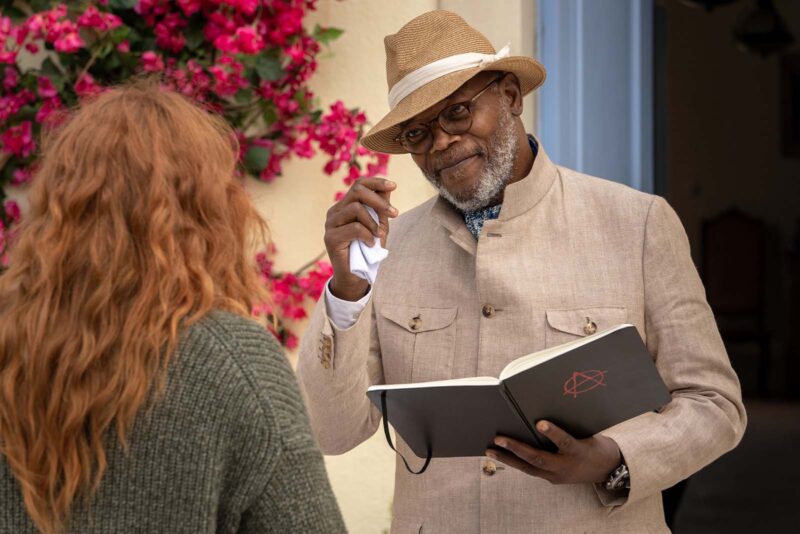
MF: That’s a perfect segue to what I want to talk about next, which is the tone in the film. Elly is a spy novelist, and her mother tells her that she’s struggling with the tone of the book that Elly is working on. How challenging was it to find the tone of this film? And is it more challenging to find when you pass the film off to another editor and back again?
Lee Smith, ACE: I think we’ve all got our standpoints. There was a moment in X-Men: First Class where I think one of the characters was lowering her blouse, and exposing her chest. The camera kept going down, and I kept cutting away. Matthew was killing himself, laughing. He said, “I can see what you’re thinking” and I said, “I’m just thinking PG-13!” If you want to make an R-rated movie, make an R-rated movie. If you want to make a PG-13 movie, make a PG-13 movie. I guess we all have a different bar as to what we think is appropriate. I think Tom is pretty similar to me. This film gestated for a long time in post and that’s what happened.

Tom Harrison-Read: Matthew is very aware of all of these things. He has a reputation for putting things into his films that wouldn’t normally make it through in a studio movie because he self-finances. He’s not told what to do by studios as much. There are things in his other movies that you might think, “Wow, that’s going a bit far.” That’s mischievous and it’s on purpose.
For this film, we didn’t want to be R-rated, but we still wanted to have that cheekiness. So you have to push the envelope a little bit. The head stomping may be on the edge of taste, but it’s done as a joke. People nervously laugh about it. Sam Rockwell is brilliant in those scenes. I think it skated just on the right side.
There are a few other things in the movie that are like that, like the Whirly Bird. That’s something where Matthew said, “Let’s see if people will swallow this.”
Lee Smith, ACE: Literally.
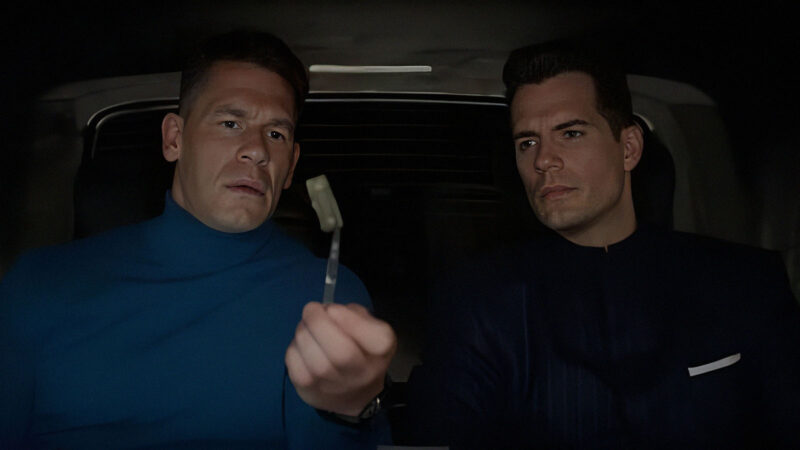
Tom Harrison-Read: Yes. It’s a crazy idea. He wanted to see if people would go with it, in a mischievous way If you start the movie with that right, it’s kind of to make people think, “What is this? Is this a spoof?”
The opening of the movie was quite a challenge. It isn’t that all the way through. It’s posted wrong straight away, but then it has to be fun and interesting enough so people will carry on watching. We were always wondering if people were going to think, “What is this? I don’t want to watch anymore” or if they would think, “Wow, what is this? It’s crazy! Where is this going?”
The challenge was getting through to Bryce Dallas Howard. We had to figure out how long we could stay in the heightened world where crazy things like the Whirly Bird could happen before we had to go to her world. For the people who might think it’s a bit too heightened for them, we had to compress things a little bit, but you couldn’t take that much out.
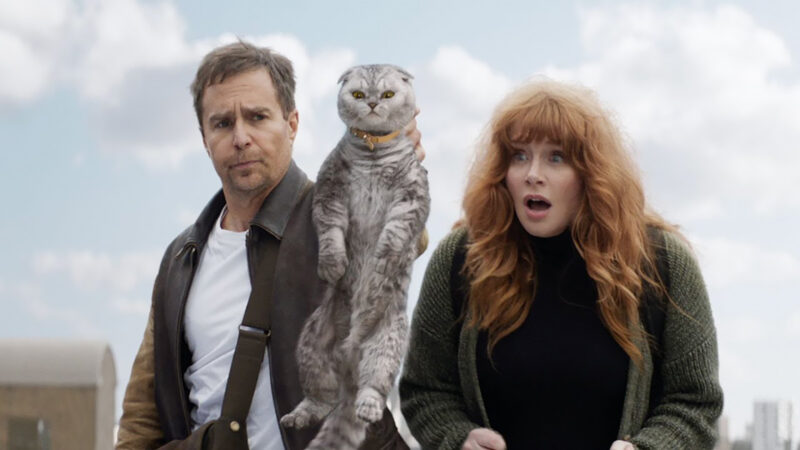
I think the film’s marketing was also very important in this regard. If you see the fictional part at the beginning, knowing it isn’t what the whole film is about, you might think, “Where are Sam Rockwell and Bryce Dallas Howard?” Some people might want it to be the Whirly Bird all the way through. So, it was a challenge in that regard. How long can you stay in one mode before you have to switch out of it? Wrong-footing an audience is one thing, but wrong-footing them to the point that they switch off the film is the danger.
How long can you stay in one mode before you have to switch out of it?
MF: The finale of Argylle is so crazy. At the end, there is an elaborate escape sequence that is part shootout, part dance number, and part slow-motion smoke show. If you don’t gradually level up the audience to that point, they might think, “What is this? This is not our movie anymore. It defies the visual language and tone.” Is that something that you have to pay attention to? How do you earn your way to this kind of ending?
Lee Smith, ACE: Look, the smoke thing is from Matthew’s mom. That’s all I can say. It’s a tricky one. Tom and I had a lot of discussions about it. “Is this a dream sequence? Is this in their imagination? Are they fantasizing? Are we in a parallel reality?” I have thoughts on it, but that’s probably not the way that it’s supposed to be. It was just one of those scenes that was wanted and it was executed.
Tom Harrison-Read: Funnily enough, we were open to letting it just be in their minds for the longest time. Her memories come back, they realize they love each other, and this is them dancing again, finally, after all this time. It’s heightened, but is it all in their minds?
We had alternates for one shot. One of them lets you know that it is all in their minds and one version didn’t. There’s a heat vision shot that Bryan Cranston’s character sees when they’re doing the Whirly Bird, where she’s holding him up. Then we had what was happening in the real world, which was a Mr. and Mrs. Smith-style tactical dance fight. They were leaning over each other and shooting, and that’s what’s in the movie. I think that tells you what Matthew wanted you to think, which is you’re seeing something that wasn’t present in the rest of that sequence.
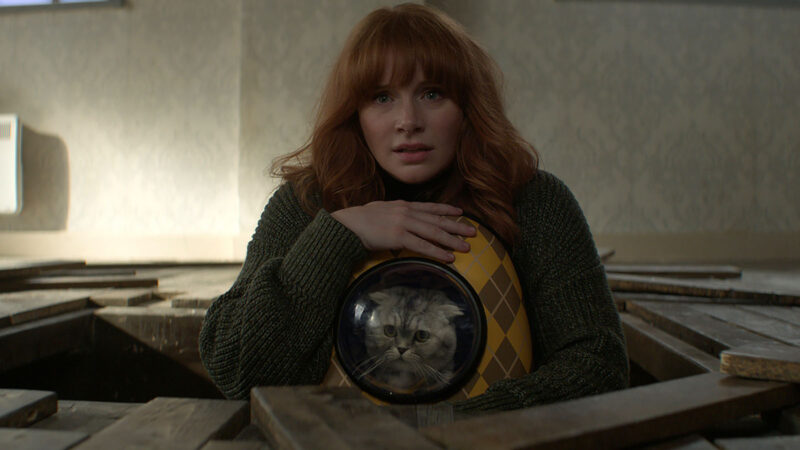
Lee Smith, ACE: From my point of view, that wasn’t successful. I think it was too subtle. Tom just articulated the answer, but I still don’t agree with it. But that’s the prerogative of an editor. We as editors don’t have to agree with everything that happens in a movie. That’s why we have editors, directors, producers, and audiences. You put all your best ideas forward. As editors, we like to say, “You try to win as many battles as you can.” Argylle is a complicated film with a very strong-minded director. That is to Matthew’s credit. I support that. You have to be strong-willed if you want your film to be in line with your vision. That’s the way you’ll get exactly what you want out of it. We all have to make adjustments
You try to win as many battles as you can.
Tom Harrison-Read: The tone of the movie twists so many times. It pulls the rug out from under you over and over, up to the point where the main character has a memory back. It fools you this way, fools you that way, and then it just cuts loose. Two super spies love each other, and they’re not going to take down the bad guys in a conventional way. They’re going to go nuts.
All the test screenings we had were very interesting. Some people thought it was too silly. They said, “It just went bonkers. Everything stopped being real.” That meant there wasn’t any real-world threat anymore. But some people were just grinning ear-to-ear. They agreed that it was silly and absurd, but they loved it. They’d never seen anything like it before. It was something you don’t usually see with big actors and a big budget.
I think Matthew was fully aware that he was pushing it. We all knew that if there wasn’t any traditional action, there wouldn’t be a real threat or any peril happening. So, we went for a completely different idea. We just went for visual aural craziness. Matthew wanted it to build to a point where you think it can’t get any crazier.
MF: Au contraire, because the next scene is truly bizarre. In this sequence, a character mounts knife blades to their boots so they can escape through a large pool of oil while machine-gunning the bad guys while performing a double axle here and a triple salchow there. It’s a laugh and a lot of VFX.
Watching the end credits, you see references to ice skating coordinators and I believe a skating rink. Is there more to that sequence than just a lot of CGI? Did you have to work some actual ice skating footage into the sequence?
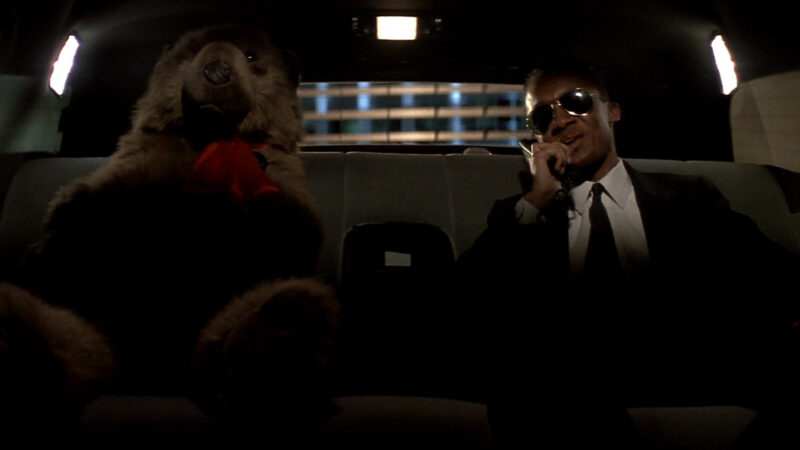
Tom Harrison-Read: Yes, they all did it for real. It was all done completely for real. An Olympic-level skater did that sequence originally. The crew did amazing stuntvis for it, but we couldn’t get her for the shoot. She had to go off to the Olympic trials. So four different skaters took her place. Every single skate move you see was real. None of them are digital doubles. All we did was some facial placement and localization.
MF: Before I let you guys go, I have a question for you, Tom. You have been in the cutting rooms of some of my favorite editors. Do you have any career advice that you would want to pay forward to the listeners?
Tom Harrison-Read: I learned something from every single editor I worked with. I learned different ways to handle myself as the head of a department. Some editors taught me the pure way that they edit. A lot of being a feature film editor comes down to personality, confidence and taste.
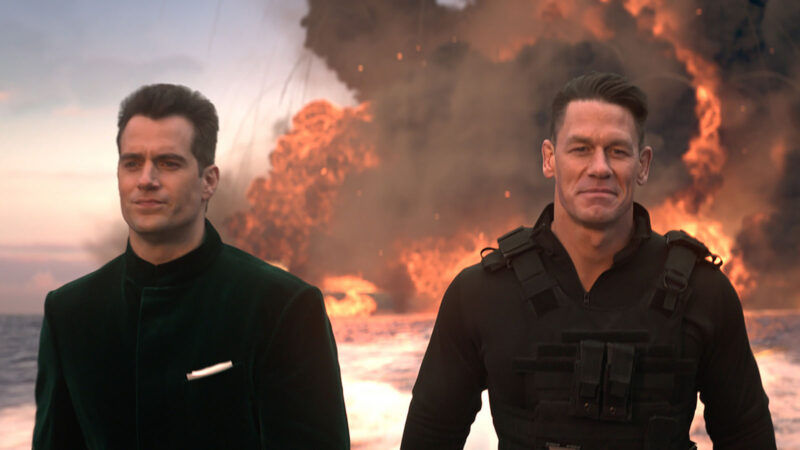
The only reason why I got into editing is because I wanted to tell stories. I wasn’t interested in running the department. That was just something that you have to get good at if you want to progress. So, we would constantly, in every single film I’ve ever worked on, talk about the story. We talked about why things work and why they don’t work. I have recollections and anecdotal stories from all of my bosses. I’m not going to single any of them out. Everybody has a different approach, which is a refreshing thing.
Before I went to film school, I was already a second assistant editor and then I went back to being a trainee in features again. I could have cut TV straight out of school, but in those days TV and feature films were miles apart. I knew what I wanted to do, so I made sure that I always got as much out of it as I could, creatively and intellectually. My rule was to always talk to the editors I was assisting. They all knew what my interests were and they helped feed them.

MF: Lee, after all of these projects you’ve done throughout your career, are you still learning new things? Is there anything new you learned by working on Argylle?
Lee Smith, ACE: The recurring theme in my entire career is, “No two jobs are the same, ever.” Editing is an incredibly rewarding experience because you learn so much on every film. You might think by now I would be fairly confident that I’m not going to know anything else, but it’s completely untrue. Every film has new challenges. Argylle certainly had its challenges, but that’s great. That’s what makes it exciting.
The last thing I’ll say is, it’s great when you can work with a good crew. I’m working with Pearce Roemer, who has worked as my assistant for years. Eddie recommended Tom, and I’m very thankful for that. It’s always nerve-racking to work on a big film with someone you’ve never actually met before. Tom, other than his lack of height, worked out well.

Tom Harrison-Read: Luckily, we worked remotely for a long time, so you didn’t have to get offended by that.
Lee Smith, ACE: This film was a great experience. The people are a huge part of the filmmaking battle, because it ain’t easy. Anyone who says it’s easy is crazy. Every film is a challenge, but it’s one I think we all relish and we’re excited for whatever the next challenge is.
MF: It is all about the people. The last question I have has nothing to do with people. What did that cat in the backpack look like before CGI? Was that just a stuffed animal or a picture of a cat’s head?
Tom Harrison-Read: That is a weird thing the press has dreamed up. Almost every single shot of the cat in the movie is the real cat, even if it wasn’t in the bag. The only time the cat is CGI is when it gets dropped off the building and when it attacks Brian Cranston. It’s just an odd-looking cat. It is Matthew Vaughn’s cat. It has these big eyes that make it look quite cartoonish. So to the people pointing out shots and calling them CGI, they are completely in-camera.
MF: There you go. Good people and a weird-looking cat. That’s all you need.

